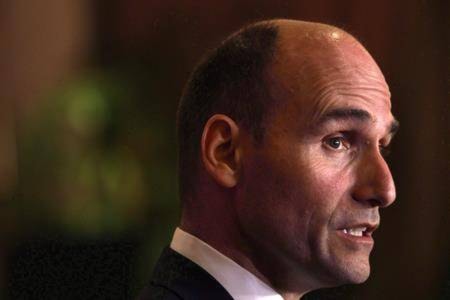OTTAWA — The minister in charge of Canada’s latest national plan to combat poverty says the long-term success of the strategy will depend on the willingness of future governments to stick to it.
The newly released 115-page plan provides a list of programs and policies the Liberals have enacted since they came to office in 2015, and links them back to efforts to beat down poverty rates.
But there’s no new policy or spending promises in the document aimed at reaching the stated goal of cutting poverty rates in half by 2030 over 2015 levels, a historic low that would see 2.1 million people out of poverty.
“The other measures that future governments will want to take … I believe will make the achievement of 2030 objective feasible — still ambitious, but feasible — and I would say realistic, if they keep the momentum that we’ve followed since 2015,” Social Development Minister Jean-Yves Duclos said in an interview.
A first yardstick for the new strategy will be in 2020 when the Liberals are promising to attain a 20 per cent drop in poverty from those 2015 figures, which would amount to about 900,000 fewer people living in poverty.
The government estimates that 650,000 people will be lifted out of poverty by next year as a result of those efforts, with promised spending programs like a new housing supplement helping to lower poverty rates in the future.
The strategy also establishes an official poverty rate for the country: the “market basket measure,” first created by federal officials in the late 1990s. The government plans to introduce legislation this year that will enshrine the strategy’s goals and the poverty threshold into law.
Under the market basket measure, a family or person is considered to be living in poverty if they can’t afford a basic basket of goods and services. The measure is tailored for 50 different communities to account for the difference in cost of living between cities.
It doesn’t, however, capture data for Indigenous communities and parts of the North, but Duclos says the government will take steps to fill the statistical gap in order to better define poverty and track efforts to alleviate it in First Nations, Inuit and Metis communities.
The document released Tuesday references much of what the Liberals heard during consultations on the strategy: a need to boost wages, help Canadians more easily afford everyday goods, and improve safety nets to prevent people from falling into poverty.
The strategy says the government should work to boost the share of income earned by the lower 40 per cent of earners “with more Canadians joining the middle class,” which would partly require redistributing more wealth from upper wage earners down the income ladder.
The share of income among lower earners is, Duclos said, “an important indicator of how close they are to the middle class and how confident they … can be of not falling back into low-income and into poverty.”
